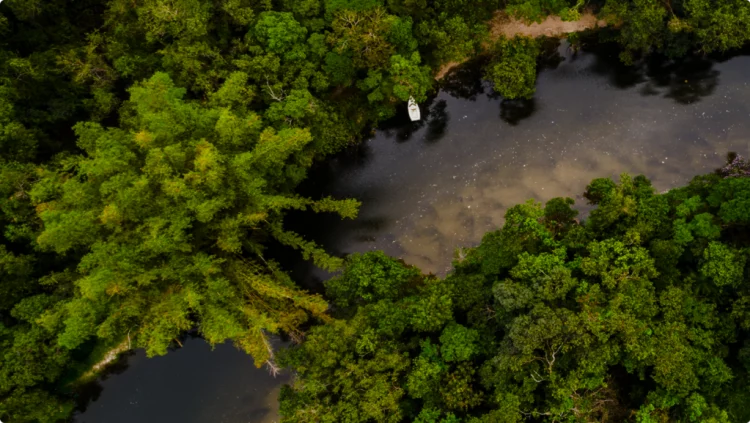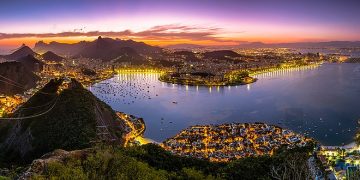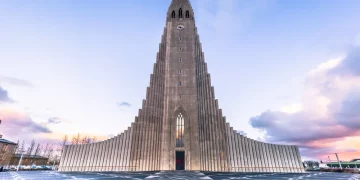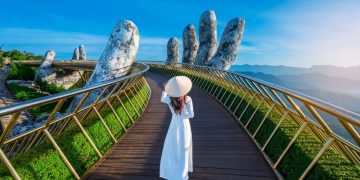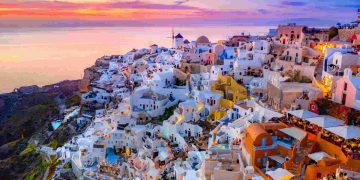Introduction to the Amazon’s Role in the Ecosystem and Indigenous Cultures
The Amazon Rainforest, often referred to as the “lungs of the Earth,” is one of the most biodiverse ecosystems on the planet. Stretching across nine countries in South America and home to an estimated 390 billion trees, the Amazon plays a critical role in regulating the Earth’s climate, producing 20% of the world’s oxygen, and hosting an unparalleled variety of plant and animal species. However, the significance of the Amazon extends far beyond its environmental benefits; it is also at the heart of many Indigenous cultures, whose lives, beliefs, and traditions are deeply intertwined with the rainforest.
Indigenous peoples have lived in the Amazon for thousands of years, with each tribe developing its own unique culture, language, and worldview shaped by the natural environment around them. For these communities, the rainforest is more than just a resource—it is a sacred, spiritual entity that sustains them in both physical and metaphysical ways. The customs, rituals, and traditions that have been passed down through generations reflect a profound connection to the land and an understanding of the intricate balance between humans and nature. This article explores the Amazon’s spiritual and natural importance to Indigenous cultures, delves into the sacred rituals and customs tied to the rainforest, and provides insights into how visitors can respectfully engage with the Amazon’s indigenous communities and ecosystems.
Sacred Rituals and Customs Tied to the Rainforest
The Amazon Rainforest is not merely a backdrop for the daily lives of Indigenous peoples—it is a central element of their spiritual world. In many Indigenous cultures, the rainforest is seen as a living entity with its own consciousness, and this belief underpins a wide range of rituals and customs. These practices are deeply connected to nature, with spiritual and physical health intertwined. The sacred relationship between the people and the land is reflected in their rituals, which are performed to honor the spirits of the rainforest, seek guidance from ancestors, and ensure the continued balance of life.
One of the most significant aspects of these customs is the role of shamanism. Shamans, or spiritual healers, serve as intermediaries between the physical world and the spirit realm. They use their knowledge of the plants, animals, and spirits of the rainforest to perform healing ceremonies, divination, and other rituals that maintain harmony between the community and nature. Shamans often rely on sacred plants, many of which can only be found in the depths of the Amazon, to facilitate their spiritual work. For example, the ayahuasca plant, a powerful psychoactive brew, is used in ceremonies to connect with the spirit world, seek guidance, and cleanse the body and mind. The use of ayahuasca, while controversial in some contexts, is deeply ingrained in the spiritual life of many Amazonian tribes.
In addition to shamanic practices, many Indigenous groups celebrate annual festivals and ceremonies that honor the forces of nature. These may include offerings to the river gods, dances to celebrate harvests, or rituals that mark significant life events such as births, marriages, and deaths. For example, the Yanomami people of northern Brazil and southern Venezuela engage in rituals that honor their ancestors and the forest spirits. These rituals, often involving elaborate body painting, chanting, and dancing, serve to strengthen the community’s connection to the rainforest and reaffirm their commitment to protecting it.

Indigenous Tribes’ Relationship with Nature
The relationship between Indigenous tribes and nature in the Amazon is not one of exploitation, but one of respect, reciprocity, and stewardship. For many tribes, the rainforest is a living, breathing entity that must be cared for and nurtured. This relationship is built on the understanding that humans and the natural world are interconnected and that the well-being of one depends on the well-being of the other.
Indigenous people often have an intimate knowledge of the Amazon’s flora and fauna. This knowledge is passed down through generations, and it allows them to use the rainforest sustainably without depleting its resources. For example, they know which plants can be used for food, medicine, shelter, and tools. This deep understanding of biodiversity enables Indigenous peoples to live in harmony with the environment, ensuring that the rainforest continues to thrive for future generations.
One of the most striking features of Indigenous cultures in the Amazon is their commitment to sustainable agriculture. Traditional farming practices, such as swidden agriculture or “slash-and-burn” farming, are often misunderstood in the modern world. Contrary to common perceptions, when practiced in moderation, these techniques allow the land to regenerate naturally, preventing soil degradation and maintaining biodiversity. Indigenous people also practice agroforestry, a method of farming that integrates crops with native trees and plants. This approach helps maintain the delicate balance of the ecosystem while providing food and materials for the community.
The rivers and waterways of the Amazon also hold deep spiritual significance. Many tribes rely on the rivers for transportation, trade, and sustenance, and they believe that the rivers are inhabited by spirits. Some tribes engage in ceremonial offerings to the river gods to ensure safe travels and bountiful harvests of fish. The river’s role as a life-giving force is symbolized in many Indigenous creation myths, where the river is often depicted as a divine being or mother.
Top Eco-Tourism Destinations to Visit the Amazon
For those looking to experience the Amazon and its Indigenous cultures, eco-tourism offers a unique and responsible way to explore this incredible region. Eco-tourism focuses on sustainable travel that benefits local communities, preserves the environment, and educates visitors about the cultural significance of the region. When visiting the Amazon, it’s essential to choose eco-friendly operators who prioritize the well-being of both the environment and the people who call the rainforest home.
- Manaus, Brazil
Manaus, the capital of the Brazilian state of Amazonas, is often the starting point for Amazonian eco-tours. Located near the meeting point of the Rio Negro and the Solimões River, Manaus is a gateway to the vast rainforest. From here, visitors can embark on river cruises, visit wildlife reserves, and take guided tours to learn about the region’s unique ecosystems. Local Indigenous communities around Manaus offer cultural tours where visitors can observe traditional crafts, music, and dance, as well as engage in discussions about the significance of the rainforest. - Puerto Maldonado, Peru
Puerto Maldonado, located in southeastern Peru, is another popular eco-tourism destination. Situated in the heart of the Peruvian Amazon, this city serves as a launching point for visits to remote reserves and Indigenous communities. Visitors can explore the Tambopata National Reserve, which is home to an astonishing variety of wildlife, including jaguars, monkeys, and thousands of bird species. Local guides, often from Indigenous communities, lead eco-tours that include visits to medicinal plant gardens and traditional villages. - Iquitos, Peru
Iquitos, one of the largest cities in the Peruvian Amazon, is another gateway to the jungle. The city is surrounded by dense rainforest and is accessible only by boat or air. From Iquitos, travelers can explore the Amazon River and visit local Indigenous villages that have preserved their traditional way of life. The region is also famous for its incredible biodiversity, and eco-tourism tours often include visits to wildlife sanctuaries, bird-watching excursions, and overnight stays in jungle lodges. - Ecuador’s Yasuni National Park
Located in the eastern Amazon basin, Yasuni National Park in Ecuador is one of the most biodiverse places on Earth. It is home to several Indigenous tribes, including the Waorani, Kichwa, and Shuar peoples, who live in harmony with the rainforest. Visitors can take eco-tours to visit the park’s remote areas, learn about traditional healing practices, and explore the unique ecosystems of the Amazon. Yasuni also offers opportunities for birdwatching, wildlife observation, and cultural exchanges with Indigenous communities.
How to Respect Local Traditions While Exploring the Amazon
When visiting the Amazon, it is important to approach the region with respect and mindfulness. Understanding the cultural and spiritual significance of the rainforest to Indigenous peoples is essential for fostering positive interactions and ensuring that your visit benefits both the environment and the local communities.
- Engage with Indigenous Communities Responsibly
It’s crucial to approach interactions with Indigenous peoples with respect and cultural sensitivity. Take time to learn about their customs, traditions, and way of life before visiting. Support Indigenous-owned and operated eco-tourism ventures, which ensure that a fair share of tourism revenue is directed back into the local communities. - Minimize Environmental Impact
Eco-tourism is about minimizing your ecological footprint while experiencing the beauty of the rainforest. Stick to marked trails, avoid disturbing wildlife, and refrain from taking anything from the environment. Many Amazonian communities rely on the land for their survival, so respecting their territory and preserving the natural environment is crucial. - Avoid Cultural Appropriation
While the Amazon offers incredible opportunities for cultural exchange, it’s important to avoid cultural appropriation. Do not engage in traditional practices or rituals without the explicit permission of the community. Be respectful of their sacred customs and rituals, and understand that these practices may be deeply spiritual and personal to the people involved.
Conclusion
The Amazon Rainforest is much more than a natural wonder—it is the spiritual heart of the Indigenous cultures that have called it home for millennia. The rainforest’s ecosystems, rivers, plants, and animals all play a crucial role in shaping the lives and beliefs of the Indigenous tribes who live there. By respecting the sacred rituals, customs, and relationships that these cultures have with the rainforest, visitors can deepen their understanding of the Amazon’s cultural and natural importance. Eco-tourism offers an opportunity to explore the region’s stunning beauty while supporting Indigenous communities and preserving the rainforest for future generations.


